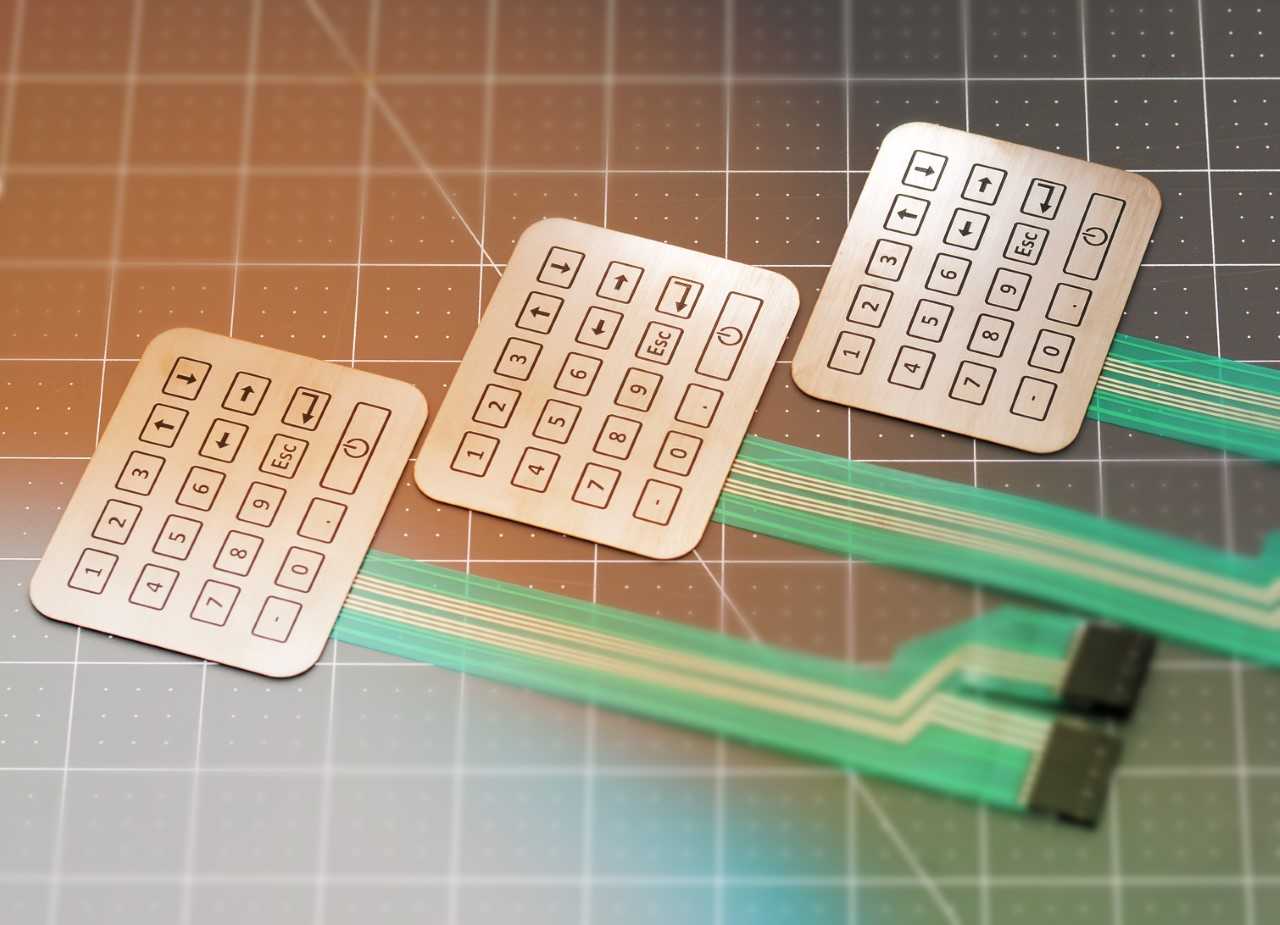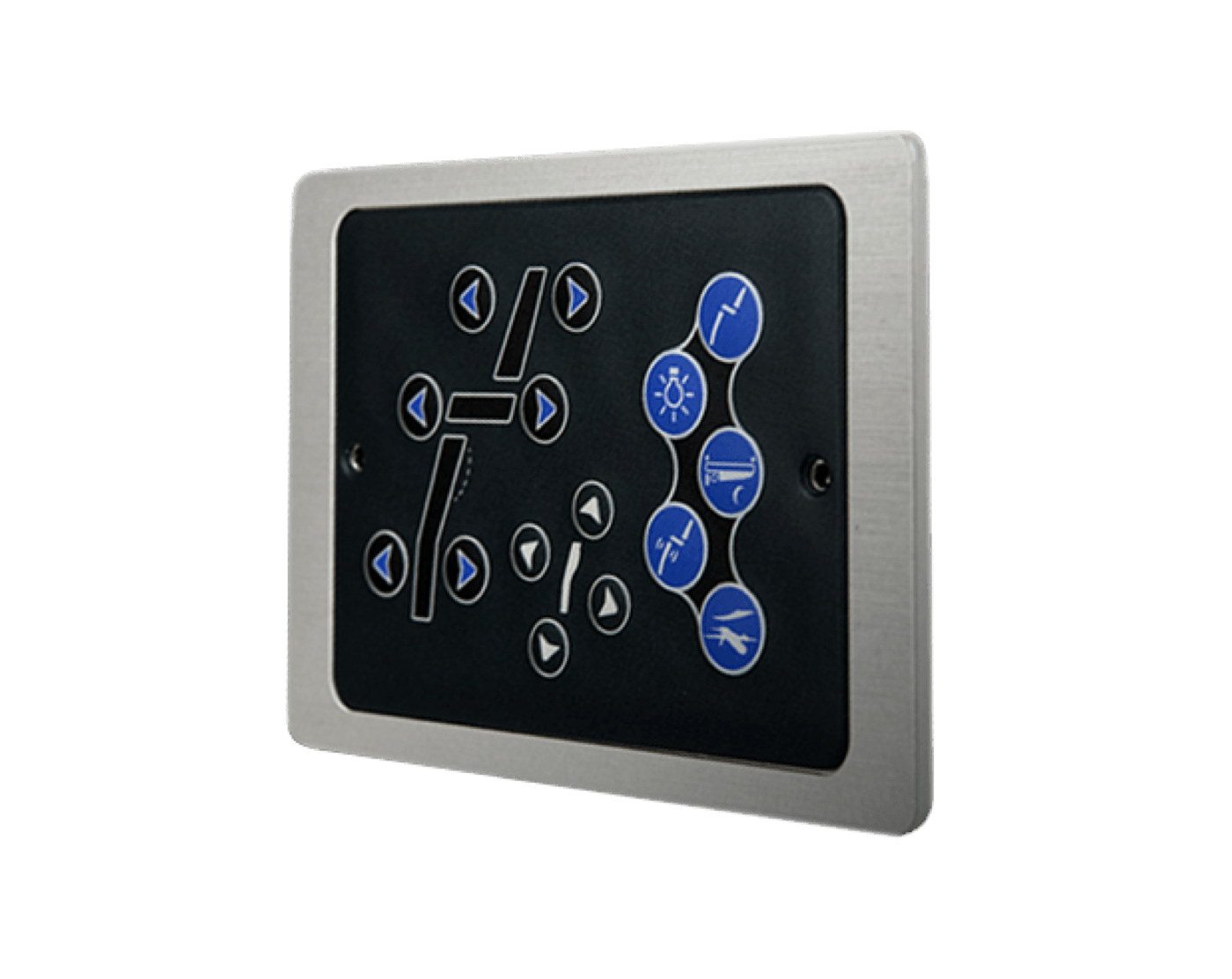Everything About Membrane Switch: Understanding Its Layout and Capability
When you think about the control interfaces in modern devices, membrane buttons commonly come to mind. Let's explore what sets membrane layer switches over apart from other control systems.
What Are Membrane Buttons?

Membrane layer buttons can likewise be personalized regarding form, size, and graphics, permitting makers to develop distinct user interfaces customized to specific items. Generally, membrane layer switches play a significant duty in boosting user experience across a large variety of applications.
Exactly How Membrane Switches Job
When you press a key on a membrane layer button, it turns on a simple yet reliable mechanism. The leading layer, typically made of versatile material, lowers onto a conductive layer beneath it. This action bridges the space between conductive traces, completing an electrical circuit. As quickly as the circuit closes, it sends out a signal to the tool's controller, which interprets your input.
You'll see that the responsive feedback differs based on the switch design, offering either a soft click or a much more obvious response. As soon as you launch the secret, the membrane layer returns to its initial placement, reopening the circuit and stopping the signal. This procedure happens almost immediately, ensuring a receptive user experience.
Membrane buttons are preferred because of their resilience and resistance to dirt and wetness, making them perfect for different applications, from home appliances to clinical devices. Recognizing this operation aids you value their extensive usage.
Key Components of Membrane Layer Switches
Comprehending the vital elements of membrane layer buttons is fundamental for grasping their functionality and style. At the core, you'll find the graphic overlay, which provides the visual interface for individuals. Below that, there's a spacer layer that separates the circuit layers, making certain that they don't make get in touch with up until pressed. The circuit layer is where the magic takes place; it contains conductive traces that complete the circuit when you push the button. An additional necessary aspect is the sticky backing, allowing the switch to adhere to surfaces firmly. Lastly, the safety layer guards versus ecological elements and put on, extending the switch's life expectancy. Each element plays a substantial role in ensuring reliable efficiency and user communication. By comprehending these components, you'll obtain understanding into exactly how membrane switches over operate and their value in various applications.
Products Utilized in Membrane Layer Switch Style
The performance and sturdiness of membrane layer switches greatly depend upon the products utilized in their layout. You usually come across polyester and polycarbonate as key substratums because of their superb strength and versatility. These products stand up to scrapes and chemicals, making them perfect for demanding environments.
The conductive layers typically use silver or carbon, chosen for their dependability and conductivity. membrane switch manufacturer. Silver provides superior performance, while carbon is a cost-effective option. For the overlay, you might think about a matte or shiny coating, relying on your aesthetic requirements and individual experience
Make particular to pick adhesives that endure environmental aspects like temperature and humidity. Selecting the right materials will certainly guarantee your membrane layer button stands the examination of time.
Design Factors To Consider for Membrane Layer Switches
While developing membrane switches, it's essential to take into account numerous elements that influence their functionality and user experience. Start by focusing on visit this page the layout and button dimension; make specific they're intuitive and simple to browse.
Confirm your design suits environmental factors, like wetness or temperature variants, which might affect performance. By carefully thinking about these components, you'll create a membrane button that enhances functionality and satisfaction.
Applications of Membrane Layer Buttons
Membrane layer buttons are versatile components found in different applications, from commercial devices to consumer electronic devices. You'll see their influence in makers that require durable user interfaces and in tools that gain from sleek designs. Understanding these applications assists you appreciate the performance and usefulness of membrane switches in everyday innovation.
Industrial Equipment Use
When you're looking to improve the performance of industrial tools, membrane layer buttons use a trusted remedy that incorporates toughness with easy to use style. These buttons are excellent for severe environments, offering resistance to dust, dampness, and chemicals. Embrace membrane layer switches to improve your procedures and enhance general efficiency.
Customer Electronics Assimilation
In the domain name of customer electronic devices, membrane switches play a necessary role in enhancing customer interaction and tool functionality. You'll discover them in tools like microwaves, remotes, and video gaming consoles, offering a smooth method to interact with modern technology. Their sleek design enables simple assimilation right into numerous products, making controls user-friendly and straightforward. With their capacity to include graphics and backlighting, you can appreciate a contemporary visual that complements the gadget's general appearance. Membrane switches likewise ensure resilience and resistance to dust and wetness, extending the life-span of your electronic devices. By selecting membrane layer switches, you improve not simply the performance however also the style of your devices, making day-to-day communications smooth and delightful.
Benefits and Disadvantages of Membrane Switches
While membrane buttons use an array of advantages, they additionally come with some drawbacks that you need to think about. One substantial advantage is their small design, making them optimal for space-constrained applications.

Nevertheless, there are negative aspects. Membrane buttons can have a shorter life-span compared to mechanical buttons, specifically under hefty usage. They can likewise be much less responsive, which could impact customer responses during procedure. Additionally, if damaged, repairing them can be challenging and usually requires full substitute. Inevitably, their level of sensitivity to severe temperatures and environmental conditions might limit their effectiveness in specific setups. Stabilizing these advantages and disadvantages will help you figure out if membrane buttons are the appropriate fit for your task.
Frequently Asked Questions
How Much Time Do Membrane Layer Switches Commonly Last?
Membrane switches over generally last between 5 to 10 years, depending on usage and ecological problems. You'll desire to evaluate variables like wear, exposure to wetness, and temperature level changes to determine their longevity effectively.
Can Membrane Layer Switches Over Be Custom-made for Specific Styles?
Yes, you can customize membrane layer switches to fit specific styles (membrane switch manufacturer). You'll have the flexibility to choose colors, forms, visit this site right here and designs that match your project's needs, guaranteeing they mix perfectly with your total visual
What Is the Price Range for Membrane Switch Manufacturing?
The expense array for membrane button manufacturing typically drops between $1 and $10 per system, relying on elements like layout complexity, amount, and materials. You can obtain quotes from makers to locate the finest option.

Are Membrane Changes Water-proof or Immune?
Membrane layer buttons can be created to be water resistant or resistant, depending upon products utilized and building and construction techniques. If you require them for wet environments, guarantee you specify those requirements during the design process.
Exactly How Do Membrane Changes Compare to Conventional Buttons?
Membrane layer buttons are generally thinner and extra versatile Go Here than typical buttons, using a smooth style. They're frequently easier to clean and incorporate, yet might not supply the tactile comments you're utilized to with mechanical alternatives.
Final thought
